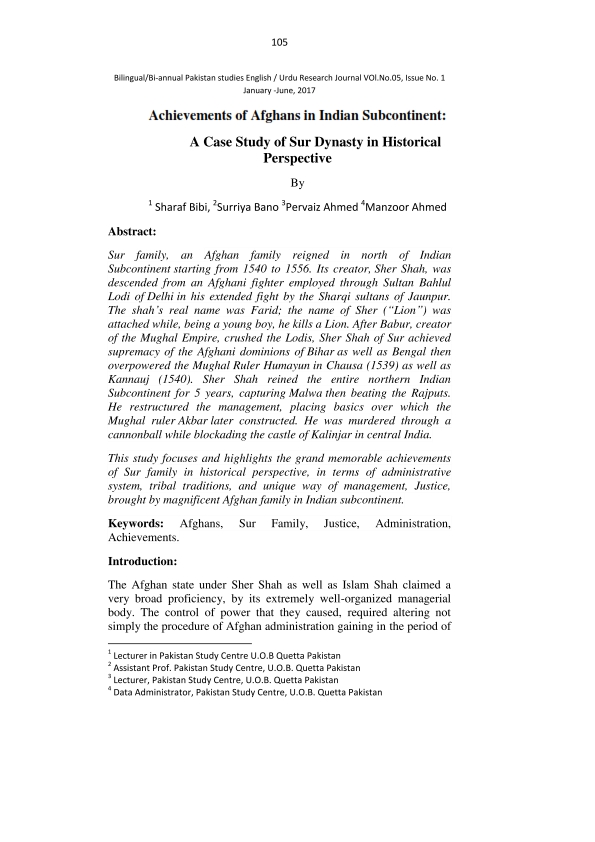Achievements of Afghans in India Subcontinent, A Case Study of Sur Dynasty in Historical Perspective
Keywords:
Afghans, Sur Family, Justice, Administration, Achievements.Abstract
Sur family, an Afghan family reigned in north of Indian
Subcontinent starting from 1540 to 1556. Its creator, Sher Shah, was
descended from an Afghani fighter employed through Sultan Bahlul
Lodi of Delhi in his extended fight by the Sharqi sultans of Jaunpur.
The shah’s real name was Farid; the name of Sher (“Lion”) was
attached while, being a young boy, he kills a Lion. After Babur, creator
of the Mughal Empire, crushed the Lodis, Sher Shah of Sur achieved
supremacy of the Afghani dominions of Bihar as well as Bengal then
overpowered the Mughal Ruler Humayun in Chausa (1539) as well as
Kannauj (1540). Sher Shah reined the entire northern Indian
Subcontinent for 5 years, capturing Malwa then beating the Rajputs.
He restructured the management, placing basics over which the
Mughal ruler Akbar later constructed. He was murdered through a
cannonball while blockading the castle of Kalinjar in central India.
This study focuses and highlights the grand memorable achievements
of Sur family in historical perspective, in terms of administrative
system, tribal traditions, and unique way of management, Justice,
brought by magnificent Afghan family in Indian subcontinent.
References
Elliot & Dowson, Vol. IV, 327.
Erskine, History of India, Vol. II, 474.
Elliot and Dowson, Vol. IV, 502.
Muntkhab-ul-Tawarikh, (Translated by Beveridge), VoL I, 496.
Qanungo, Sher Shah, 360
Tripathi, Some Aspects of Muslim Administration, 304.
The Development of Indian Polity, H.N. Sinha. 411.
Elliot and Dowson, Tarikhi Sher Shahi, VoL IV, 411.
Tarikhi Daudi, M.S. 204.
Tripathi, Some Aspects of Muslim Administration, 104.



